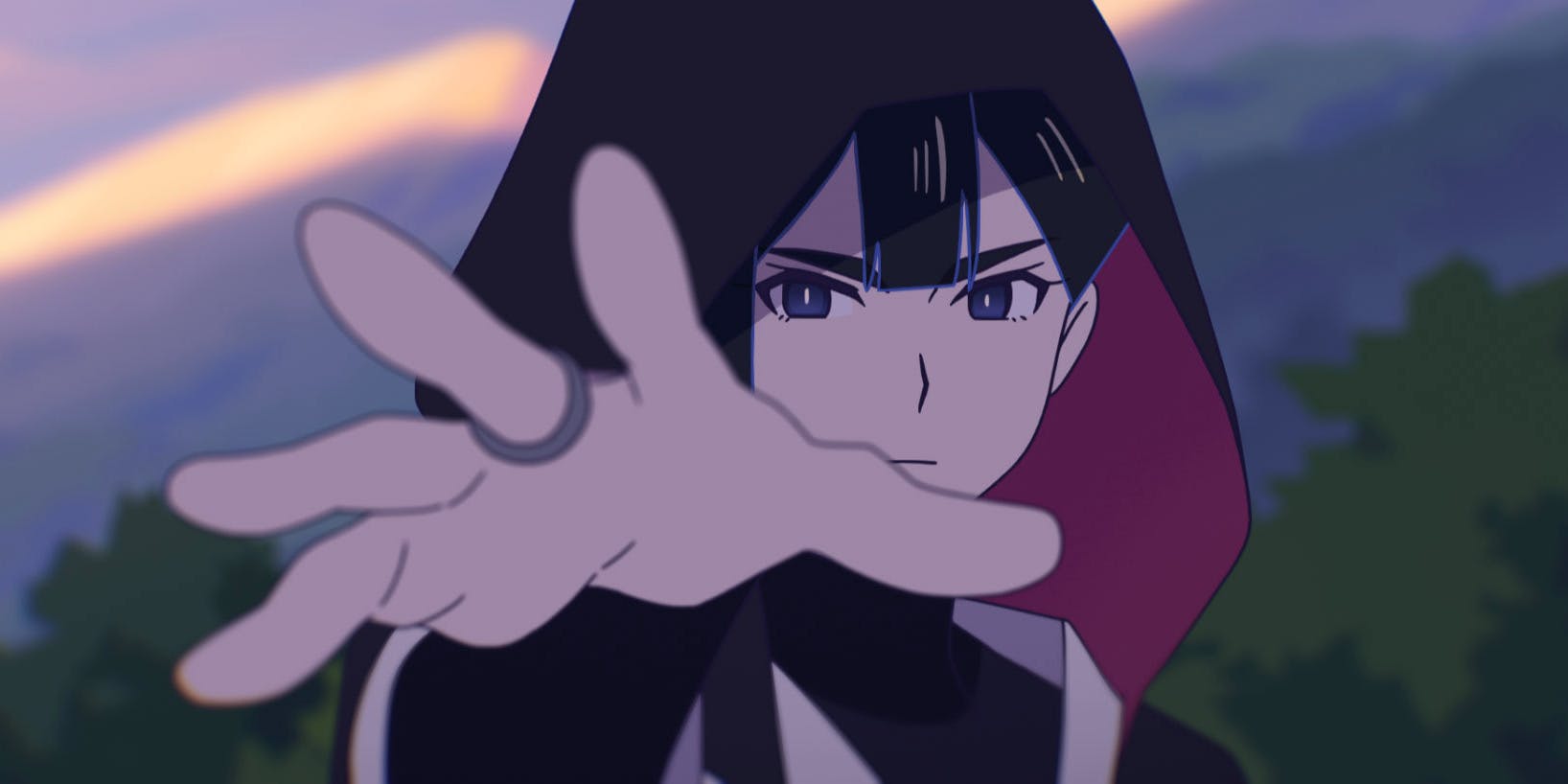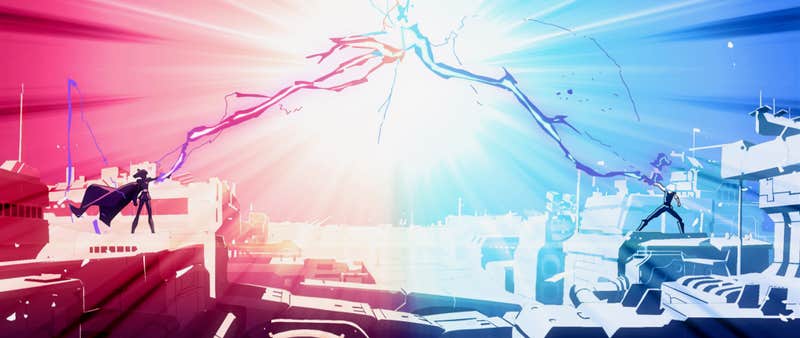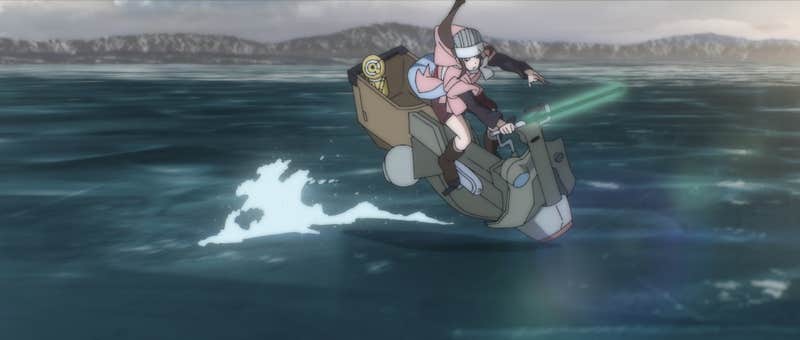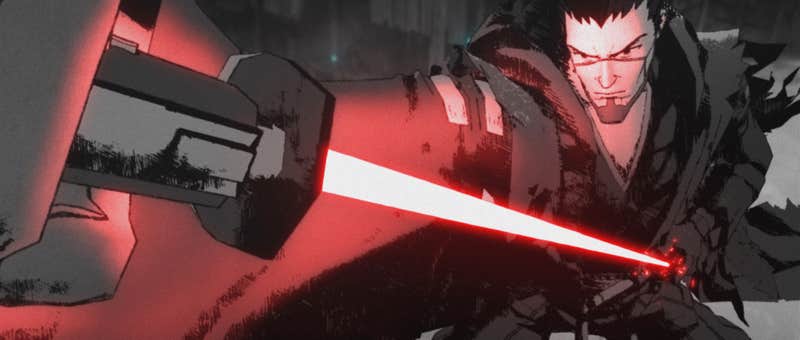
George Lucas was famously influenced by samurai films like Akira Kurosawa’s The Hidden Fortress when he made the original Star Wars, and the homages (and appropriation) of eastern culture were apparent in many of the stories that followed it. It took more than 44 years after A New Hope first graced the screen, but it’s fitting that Japanese filmmakers are finally having their turn in the Star Wars sandbox. Star Wars: Visions, which is composed of nine animated shorts crafted by seven anime studios, is the end result. While some stories certainly work better than others, it’s a stunning array of both visuals and storytelling that pushes past the, in hindsight, restrictive bounds of what came before it.
Because for as limitless as Star Wars’ galaxy far, far away can be in theory, there’s only so much we’ve explored on-screen or on the page. Until recent years, only a certain kind of person could be a hero—and even now, the perimeters of a Star Wars hero are fairly small. In a world where the Force exists, we’re still limited by physics and visual effects budgets; even the animated shows are grounded in a similar kind of reality. Despite the thousands of years of history Star Wars could explore, we’re still primarily limited to a 60-year period that usually focused (even tangentially) a single, powerful family—and if not the Skywalkers, chances are there’s at least one Jedi involved.

If you go into Star Wars: Visions expecting things to make logistical sense or to fit neatly within a rigid, predetermined timeline, you’ll be disappointed. (While the Galactic Empire is mentioned or seen in several episodes, only one of them, "Tatooine Rhapsody," actually involves established characters.) Visions is a show that isn’t going to bother with the logic behind a lightsaber contraption that can split the plasma blade and turn it into a rotating umbrella that can be used as a deadly weapon. It won’t stop to question how twins created in a lab as tools of the dark side of the Force can survive a battle on top of a star destroyer without any oxygen as they fight each other in a battle with lightsabers that take the shape of whips and strobe lights. It’s not going to spend time delving into the debate about whether a droid can hold his own against an Inquisitor, or just how a lightsaber can change color and length based on who's holding it.
Those are just a few of the things that occur in Visions, and for the record, all of those things absolutely work in context. (I’ve seen all nine episodes of the English dub.) In some instances, it’s the drama and emotion behind those scenes that can suck you on; other times, it’s how these scenes are animated that, no matter how little sense something might make or the leaps and bounds that will allow the other things to slide. It’s those things that, for the first time in quite some time, help make the many lightsaber battles all the more exciting.

Visions episodes vary by length: The shortest episodes are around 12 minutes long while the longest is nearly the length of a full TV episode at 21 minutes. With anime studios like Kamaze Douga, Production I.G., Trigger, and Science Saru, no two episodes look alike (even with a couple of them pulling double-duty). As a result, Visions episodes include a black-and-white samurai story with color popping out through droids or lightsabers (“The Duel”), a fight between siblings for the ages that defy every law of physics you can possibly think of (“The Twins”), or a planet completely devoid of life inhabited by someone attempting to bring it back (“T0-B1”).
We see successes and failures, betrayals and redemption, life and death, and almost always, we see the Force appear in a brand new way; not every character lives, and not every story gets that happy ending. Another recurring staple? Several episodes looped in Han Solo’s famous “I have a bad feeling about this” line, a sign that even when Star Wars goes full anime, some things never change.
“The Ninth Jedi” is easily Visions’ best entry, which could easily operate as the pilot of a new show if it wished. It’s masterful at building a world, looping in new lore, and leaving it open-ended enough that perhaps we could easily return to that world one day. “The Village Bride,” which follows a fallen Jedi who has the chance to make things right amid a major conflict and shows the different ways in which people can access the Force, and “The Twins,” a look at a very different set of siblings at the center of conflict than Luke and Leia, are also highlights. But even the clunkers—there were only a couple that I wasn’t too keen on—tried to explore something new or exciting, or a level of a character’s morality we weren’t as used to seeing.

Star Wars: Visions arrives in the wake of The Mandalorian and The Bad Batch, two shows that, to varying levels of success, had seasons that heavily relied on cameos and Easter eggs as narrative shortcuts; with several other shows down the pipeline—The Book of Boba Fett, Andor, Obi-Wan, Ahsoka—that will further explore more of the 67-year period that makes up the Skywalker era, that trend is sure to continue. But Visions offers another way forward: Getting weird and pushing past those restrictive limits might not be a guaranteed success, but it’ll almost always be the more interesting option.
All nine episodes of Star Wars: Visions will be available to stream on Disney+ Sept. 22.
The post ‘Star Wars: Visions’ takes full advantage of animation’s limitless medium appeared first on The Daily Dot.
0 Commentaires